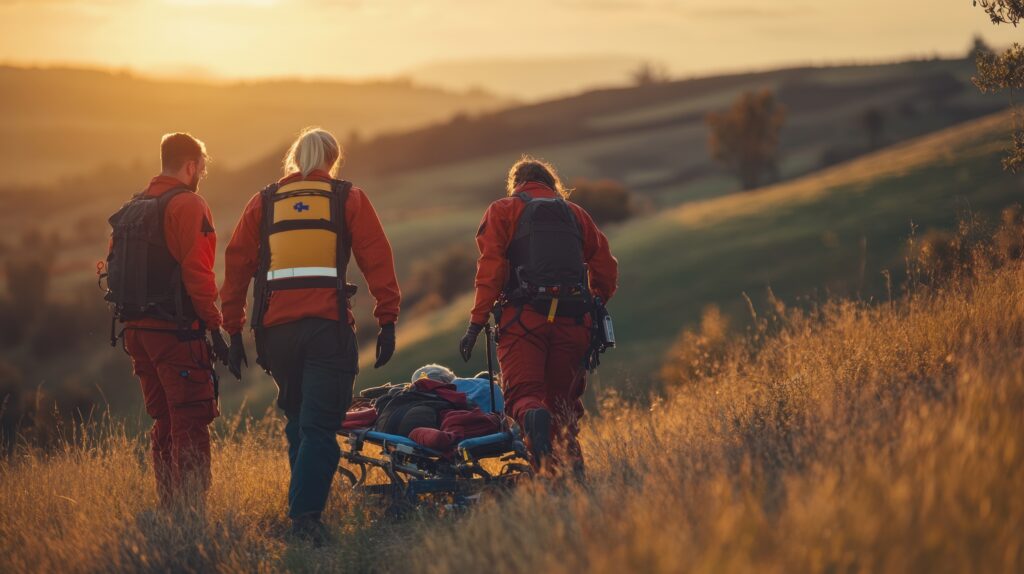A New Chapter in Emergency Medicine
Working in rural emergency departments has shaped me—not just as a physician, but as a person. Over the years, I’ve come to see that medicine in these settings demands more than clinical skill. It asks for adaptability, resourcefulness, and above all, compassion. One area where this has become particularly clear is in the care of patients struggling with substance use disorders, especially opioid addiction.
In many ways, rural EDs have been overlooked in the national conversation about addiction treatment. Yet, these departments are becoming quiet but powerful players in the fight against opioid use disorder. We are redefining what it means to respond to a crisis, not just by reviving someone from an overdose, but by offering them a real chance at recovery—starting right here in the emergency department.
When Treatment Can’t Wait
In rural communities, patients often don’t have the luxury of time—or options. Specialty addiction clinics may be hours away. Mental health services are frequently stretched thin. Many patients arrive in withdrawal or after an overdose, with no idea where to turn next. This is where the emergency department becomes more than just a place for acute care. It becomes a gateway to something better.
When someone walks through our doors in distress, they’re making a decision—often the hardest one they’ll make. They’re asking for help. And if we send them away with nothing more than a list of referrals that may or may not pan out, we’re missing an opportunity. That’s why Medication-Assisted Treatment, or MAT, needs to begin right here.
Buprenorphine as a Bridge
One of the most valuable tools we have in this fight is buprenorphine. It’s a partial opioid agonist that can help patients manage withdrawal symptoms and reduce cravings. More importantly, it gives them breathing room—a chance to make decisions with a clear head and a stable body.
In the past, there was hesitation around starting MAT in the ED. But that’s changing, and it needs to continue. In rural settings, this change is even more urgent. For many of our patients, this may be the only interaction they have with the healthcare system for weeks or months. If we can use that moment to get them started on treatment, we’re not just saving a life—we’re giving them a shot at getting their life back.
I’ve seen firsthand how powerful this can be. Patients who were in severe withdrawal become calm, able to talk about their situation, open to next steps. Sometimes, that first dose of buprenorphine is the difference between hope and despair. And hope is where recovery begins.
Stigma Still Stands in the Way
We have to talk about the elephant in the room: stigma. There’s still a harmful and outdated view of addiction in some corners of medicine and society. But addiction is a disease—not a failure of character, not a lack of willpower. If we treated heart attacks or diabetes the way some still treat opioid use disorder, we’d be called unethical. And rightly so.
It’s time to shift that mindset. In rural EDs, we often have close relationships with the communities we serve. That can be a double-edged sword—some worry about judgment or being recognized. But it also gives us a unique opportunity to lead the way in changing the conversation. By offering MAT, by listening without judgment, and by treating addiction like the medical condition it is, we begin to rebuild trust.
Building a Culture of Compassion and Follow-Through
Starting MAT in the ED is just the beginning. The next step—connecting patients to long-term care—is where the system often falls short. In rural areas, we don’t always have the infrastructure we need. That’s why partnerships and creativity are so important. Telemedicine, mobile outreach, peer recovery coaches—these are all tools we can use to bridge the gap.
But even when the ideal support system isn’t in place, we can still make a difference. Every time we treat a patient with dignity and offer real options, we reinforce the idea that they are worth helping. That’s a message many of them haven’t heard in a long time.
Rural EDs: A Model for Change
I believe that rural emergency departments are not just participating in this change—we’re leading it. Out of necessity, we’ve learned to act quickly, adapt to limited resources, and do more with less. That spirit of innovation is exactly what the addiction crisis demands.
We are proving that you don’t need a big-city hospital or a specialized clinic to deliver compassionate, evidence-based addiction care. You just need commitment, training, and the courage to start the conversation.
In many ways, the quiet revolution happening in rural EDs mirrors the journey of recovery itself. It’s not flashy. It doesn’t always get attention. But it’s persistent, deeply human, and rooted in hope.
For me, this work is personal. I’ve seen too many lives cut short by addiction. I’ve watched families struggle to find support in systems that aren’t built for them. But I’ve also seen what’s possible when we decide to meet patients where they are—with open minds and open hearts.
As emergency physicians, we may not always be able to walk the entire path with our patients, but we can help them take the first, most important step. And in rural communities like the ones I serve, that step often begins right here in the ED.
If we can keep pushing forward—educating ourselves, advocating for resources, challenging stigma—then I believe we’ll look back on this time as the beginning of something transformative. A quiet revolution, yes. But one that will echo for generations.
